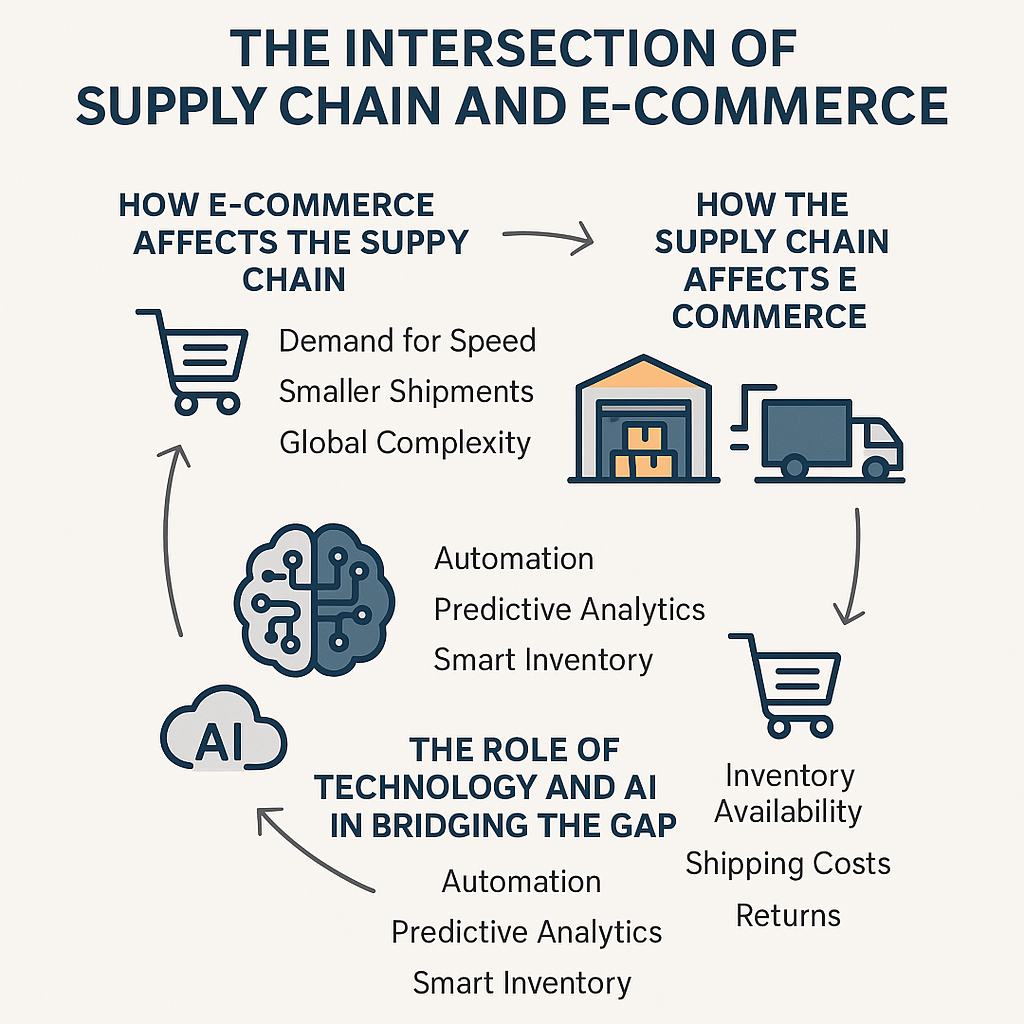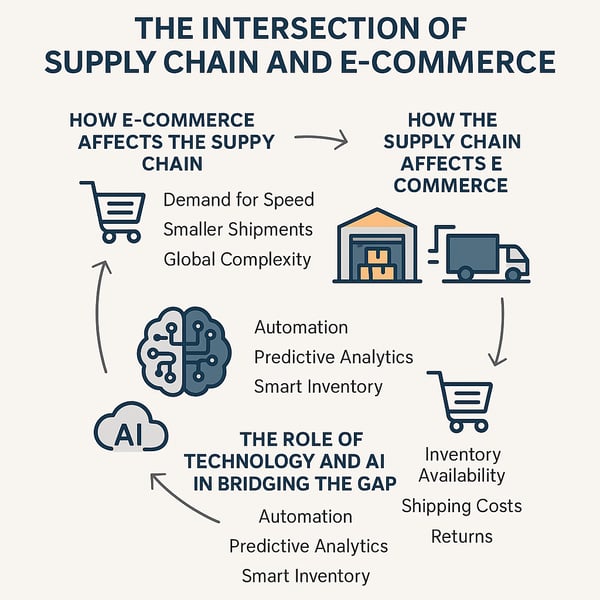Supply Chain Meets E-Commerce: Tech Evolution
June 12, 2025

The Intersection of Supply Chain and E-Commerce: A Technological Evolution
The synergy between supply chain management and e-commerce has become one of the most critical drivers of global commerce. As online shopping continues to reshape consumer behavior, the supply chain must evolve in tandem to meet rising expectations for speed, transparency, and reliability. This intersection is not just a point of convergence—it's a dynamic relationship where each domain profoundly influences the other.

How E-Commerce Impacts the Supply Chain
E-commerce has redefined the traditional supply chain in several key ways:
- Increased Demand for Speed and Flexibility: Consumers expect rapid delivery, often within 24 hours. This has forced supply chains to become more agile, with decentralized warehousing and last-mile delivery innovations.
- Higher Order Volumes and Smaller Shipments: Unlike bulk B2B shipments, e-commerce often involves individual orders, increasing complexity and requiring more granular inventory management.
- Global Reach and Complexity: Online retailers often serve international markets, necessitating robust logistics networks and compliance with diverse regulations.
How the Supply Chain Shapes E-Commerce
Conversely, the capabilities and limitations of the supply chain directly affect the success of e-commerce platforms:
- Inventory Availability: Stockouts or delays can lead to lost sales and diminished customer trust.
- Shipping Costs and Delivery Times: These are major factors in cart abandonment and customer satisfaction.
- Returns Management: Efficient reverse logistics are essential for handling returns, a common feature of online shopping.
The Role of Technology: Bridging the Gap
Technology has emerged as the linchpin in harmonizing supply chain operations with e-commerce demands. Here’s how:
- Automation and Robotics: Warehouses now use automated picking systems and robots to speed up order fulfillment.
- Real-Time Tracking and Visibility: IoT devices and GPS tracking provide end-to-end visibility, enhancing transparency and trust.
- Cloud-Based Platforms: These enable seamless integration between e-commerce platforms and supply chain partners, improving coordination and data sharing.
However, technology isn't a panacea. It cannot fully eliminate:
- Geopolitical Risks: Trade wars, tariffs, and border restrictions still disrupt supply chains.
- Natural Disasters and Pandemics: These events can cripple even the most technologically advanced systems.
- Human Factors: Labor shortages, strikes, and errors still pose challenges that tech alone can't solve.
The Future: AI’s Transformative Role
Over the next five years, artificial intelligence is poised to revolutionize both e-commerce and supply chain management:
In E-Commerce:
- Personalized Shopping Experiences: AI will refine product recommendations, dynamic pricing, and customer service through chatbots and virtual assistants.
- Demand Forecasting: AI models will predict consumer trends with greater accuracy, helping retailers stock the right products at the right time.
In Supply Chain:
- Predictive Analytics: AI will anticipate disruptions and suggest proactive measures, reducing downtime and inefficiencies.
- Autonomous Logistics: From self-driving delivery vehicles to drone shipments, AI will enable faster and more cost-effective logistics.
- Smart Inventory Management: AI will optimize stock levels across multiple locations, reducing waste and improving service levels.
Wrapping Up
The intersection of supply chain and e-commerce is a complex, landscape shaped by consumer expectations, technological advancements, and global dynamics. While technology—especially AI—offers powerful tools to bridge gaps and enhance performance, it cannot fully insulate these systems from external shocks or human unpredictability. Businesses that invest in resilient, tech-enabled supply chains will be best positioned to thrive in the fast-paced world of digital commerce.

 866-625-9377
866-625-9377




